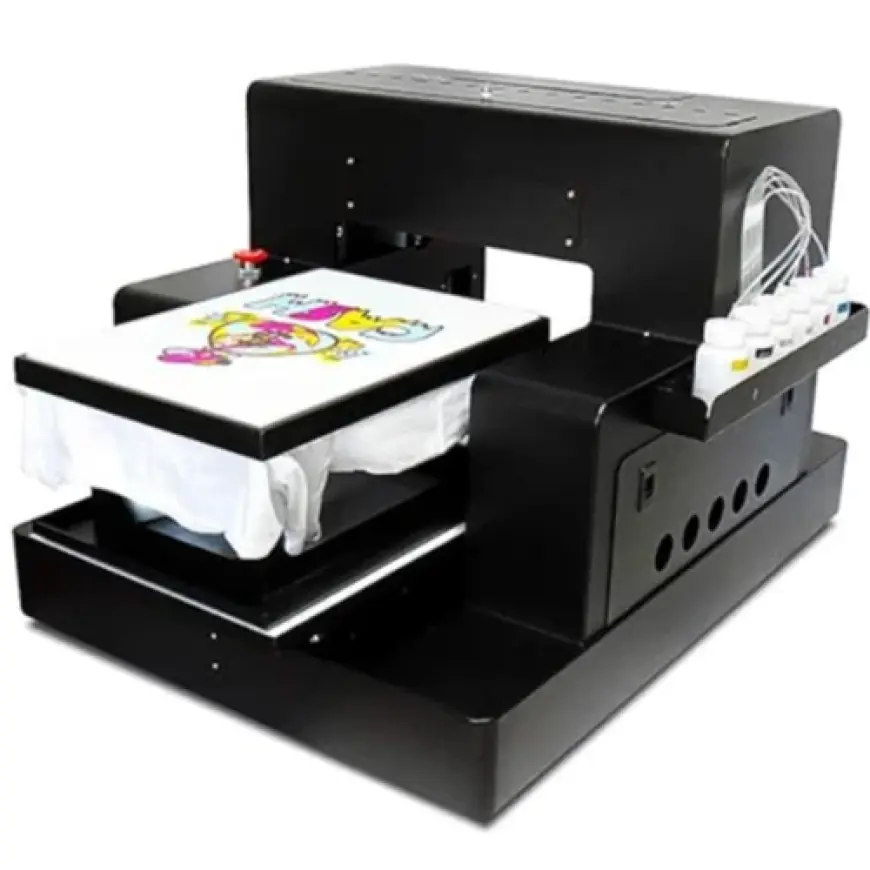How to Create High-Impact Prints with Your DTF Printer

In today’s competitive custom printing industry, creating designs that grab attention and leave a lasting impression is essential. Whether you’re producing t-shirts, hoodies, tote bags, or sportswear, the quality and visual appeal of your prints determine how your brand is perceived. With the power of a DTF Printer, achieving high-impact, professional-quality prints is more accessible than ever—if you know the right techniques.
A DTF Printer (Direct-to-Film Printer) allows you to print full-color designs onto a special film, apply adhesive powder, and transfer them to a wide variety of fabrics. The process delivers vibrant, durable results that work on cotton, polyester, blends, and even challenging materials like nylon and spandex. But to truly make your designs stand out, you need to combine this technology with smart design and production practices.
In this guide, we’ll cover practical tips and creative strategies to help you produce stunning, high-impact prints with your DTF Printer.
1. Start with High-Resolution Artwork
The foundation of any great print is a sharp, clear design. Since DTF Printers reproduce even the smallest details, low-quality images will result in blurry or pixelated prints.
-
Minimum Resolution: Use designs at 300 DPI for optimal clarity.
-
Vector Graphics: Whenever possible, work with vector files (AI, EPS, SVG) for scalability without losing quality.
-
Color Profiles: Use the correct CMYK profile for accurate color reproduction.
2. Master Your Color Game
One of the biggest advantages of a DTF Printer is its ability to produce vibrant, full-color prints—even on dark fabrics. To maximize this:
-
Use Bold, Contrasting Colors: High-contrast designs stand out more on garments.
-
Avoid Over-Saturation: Oversaturated colors may look unnatural after printing.
-
Consider the Fabric Color: Adjust your design to complement the garment’s base color for extra visual impact.
3. Choose the Right Film and Adhesive Powder
Your transfer film and adhesive powder play a major role in print quality:
-
Premium PET Films: Ensure smooth ink absorption and easy release during transfer.
-
Matching Powder Type: Use standard adhesive powder for cotton and blends, and low-temp powder for heat-sensitive fabrics like polyester and nylon.
-
Even Powder Application: Uneven coverage can cause patchy prints.
4. Perfect Your Printer Settings
Every DTF Printer has adjustable settings for ink flow, print speed, and curing. Tweaking these can dramatically improve print quality:
-
Ink Saturation: Too little ink results in faded prints, while too much can cause bleeding.
-
Print Speed: Slower speeds often produce sharper details.
-
White Ink Underbase: Always use a strong white underbase for printing on dark garments to make colors pop.
5. Optimize Heat Press Techniques
Even a perfect print on film can fail if transferred incorrectly. For high-impact results:
-
Correct Temperature & Time: Standard settings are 160–170°C for 15–20 seconds, but adjust for specialty fabrics.
-
Medium Pressure: Too much pressure can distort designs; too little can cause poor adhesion.
-
Post-Pressing: After peeling the film, give the garment a 5-second re-press for added durability.
6. Incorporate Creative Design Elements
Beyond technical perfection, creativity is key to making prints stand out:
-
Textures & Gradients: DTF technology handles smooth gradients and textures beautifully.
-
Photo Realism: Try printing photographic designs for a modern, artistic touch.
-
Mixed Media: Combine DTF transfers with embroidery, patches, or vinyl for a premium, layered look.
7. Test Before Large Runs
Before committing to bulk production, run a few test prints:
-
Wash Test: Check how the print holds up after several washes.
-
Stretch Test: Ensure prints on stretchy fabrics don’t crack.
-
Color Accuracy Check: Compare printed colors to your original design for consistency.
8. Maintain Your DTF Printer
Consistent quality comes from a well-maintained machine:
-
Daily Cleaning: Wipe print heads and ensure no ink clogs.
-
Weekly Calibration: Keeps colors and alignment consistent.
-
Proper Storage: Store films, powders, and inks in a dry, temperature-controlled environment.
9. Stay Updated with Trends
High-impact prints often align with current market trends. Stay ahead by:
-
Following Fashion Influences: Adapt popular colors, typography, and graphics.
-
Offering Seasonal Designs: Holidays, sports seasons, and events are perfect for themed prints.
-
Collaborating with Artists: Fresh design perspectives can boost your brand’s uniqueness.
10. Leverage Your High-Impact Prints for Marketing
Once you’ve mastered high-impact designs, showcase them to attract more customers:
-
Professional Product Photography: Highlight colors, textures, and print details.
-
Social Media Reels: Show the printing process for behind-the-scenes appeal.
-
Customer Reviews & Testimonials: Share real feedback about the quality and vibrancy of your prints.
Final Thoughts
A DTF Printer offers incredible flexibility, enabling you to print on a variety of fabrics and produce stunning, durable designs. But achieving high-impact results requires more than just owning the machine—it’s about combining technical precision with creative flair.
By focusing on high-resolution artwork, mastering color management, using the right materials, and refining your heat press techniques, you can produce prints that not only meet but exceed customer expectations. In the crowded world of custom merchandise, high-impact prints are your ticket to standing out and building a loyal customer base.
When done right, your DTF Printer becomes more than a production tool—it becomes the backbone of your brand’s visual identity and profitability.
What's Your Reaction?
 Like
0
Like
0
 Dislike
0
Dislike
0
 Love
0
Love
0
 Funny
0
Funny
0
 Angry
0
Angry
0
 Sad
0
Sad
0
 Wow
0
Wow
0


















































